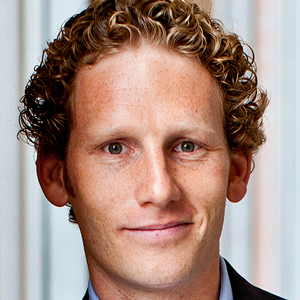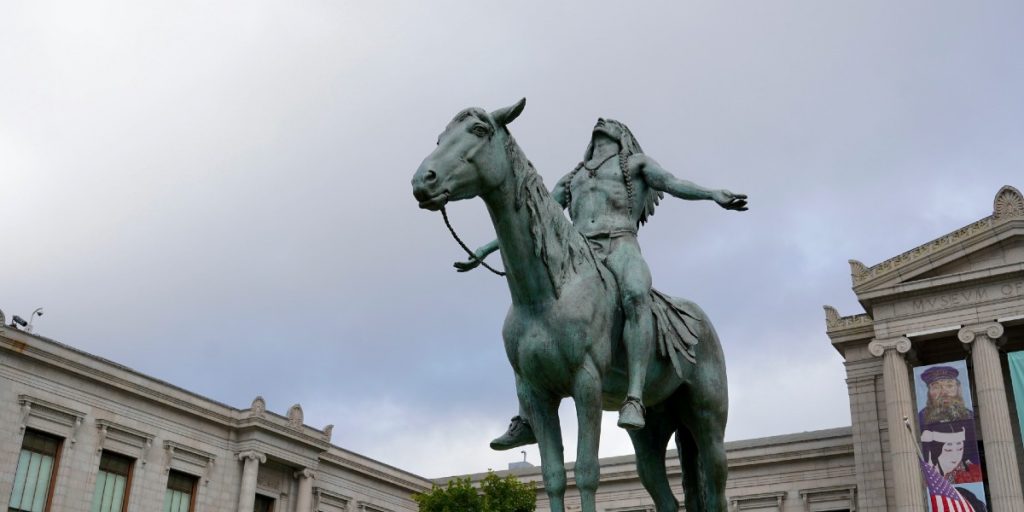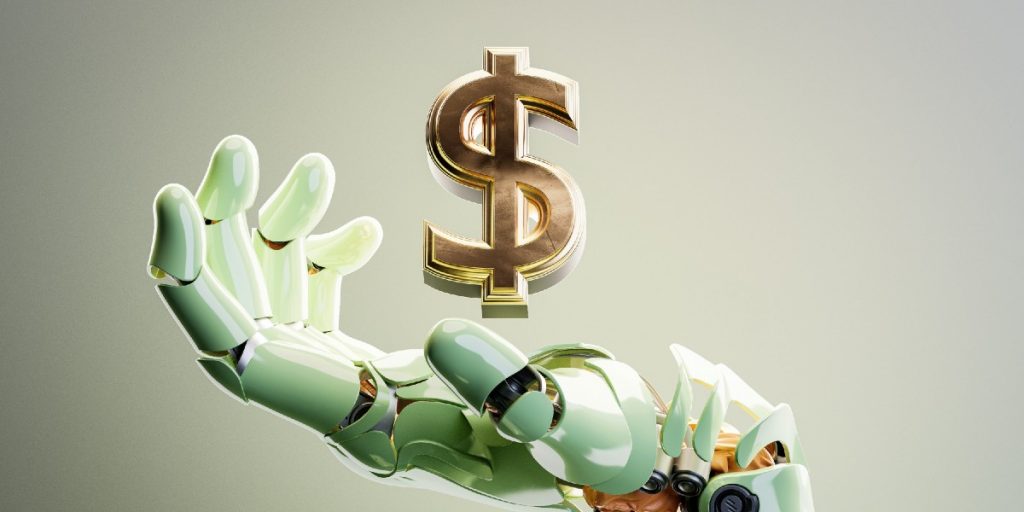This is an excerpt from Jonah Berger’s forthcoming book, Invisible Influence: The Hidden Forces that Shape Behavior
Think about a choice you made recently. Any choice. Which breakfast cereal to buy, movie to see, or place to have lunch. Or even a more important decision: which person to date, political candidate to support, or career to pursue.
Why did you make that choice? Why did you pick the particular option you ended up choosing?
Seems like an easy question. While various idiosyncratic reasons may come to mind, in general, they all point in the same direction: you. Your personal tastes and preferences. Your likes and dislikes. Which potential mate you found funny or attractive. Whether the candidate’s policy stance matches your own. The notion that our choices are driven by our own personal thoughts and opinions seems so obvious that it is not even worth mentioning.
Except that it’s wrong.
Without our realizing it, others have a huge influence on almost every aspect of life. People vote because others are voting, eat more when others are eating, and buy a new car because their neighbors have recently done the same. Social influence affects the products people buy, health plans they choose, grades they get in school, and careers they follow. It shapes whether people save for retirement, invest in the stock market, donate money, join a fraternity, save energy, or adopt new innovations. Social influence even affects whether people engage in criminal activity or are satisfied with their job. Ninety-nine-point-nine percent of all decisions are shaped by others. It’s hard to find a decision or behavior that isn’t affected by other people.
In fact, looking across all domains of our lives, there is only one place we don’t seem to see social influence. Ourselves.
I started studying the science of social influence—the way others affect our behavior—by biking around Palo Alto, California, looking for BMWs.
Palo Alto is one of the world’s most expensive places to live. Stock options and IPOs have fattened the pockets of many residents and have also pushed up everything from housing prices to private school tuition. Ferrari and Maserati have dealerships nearby; lunch at one of the high-end restaurants can run close to $200 per person.
Looking for BMWs was like hunting for Easter eggs. There was no surefire way to know where to find them, so I relied on a little intuition and a lot of luck. I slowly biked up and down different streets, scanning cars for the telltale shape and logo. Then, at each corner, I would stop and try to guess which direction had the best chance of success. Dentist’s office to the left? Dentists tend to drive nice cars, so why not do a quick loop of the parking lot. High-end grocery store to the right? Worth a shot.
Every time I found a BMW, I reached into my messenger bag, pulled out a piece of paper, and gingerly tucked it under one of the windshield wipers. These weren’t coupons for body shops or advertisements for auto detailing. We weren’t selling anything at all.
Instead, Princeton professor Emily Pronin and I were interested in how different factors influenced car buying. Which factors people thought influenced their own car purchase decision and how much those same factors played a role in someone else’s BMW purchase.
In addition to standard factors like price, gas mileage, and reliability, the survey also asked about more social influences. Did their friends’ opinions affect their decision? What about whether the car was associated with cool or high-status people?
Each respondent answered the set of questions twice: once for themselves, and once for another person they knew who also drove a BMW. How much was that other person’s BMW purchase influenced by things like price and gas mileage? Whether cool or high-status people drove something similar?
After biking around in circles most of the day, I had left surveys on more than a hundred BMWs. Each with a self-addressed envelope for people to mail their responses back.
And then, I waited.
The first day the mailman couldn’t come fast enough. But when I opened the mailbox, all that was inside was disappointment. Just a bunch of random coupons and a furniture company catalog. No one had returned the survey.
Trending: How to Transform Daily Habits into Life-Changing Rituals
The next day my optimism was tempered with caution. I sauntered by the mailbox and peeked inside. Still nothing. Now I was starting to get worried. Had people ignored the survey? Maybe the envelopes had blown away?
By the third day a feeling of dread accompanied the mail. If there were still no responses, I’d have to go out and find new BMWs (or we’d have to come up with a different approach). But finally, way in the back of the mailbox was the answer I’d been waiting for. One of the small, white envelopes that I had placed on a car windshield a couple days before.
The next day there were a few more responses. And a bunch more the day after that. We were in business. We took the responses and compared people’s perceptions of themselves with their perceptions of others. What influenced their BMW purchase versus what influenced someone else’s BMW purchase.
Many things were relatively similar. Not surprisingly, people thought factors like price and gas mileage mattered a lot, and they were equally important for both themselves and others. Price had a big impact on their own BMW purchase, and they thought it had a similarly large impact on whether another person had bought a BMW as well.
But when it came to assessing the impact of social influence, things changed. It wasn’t that people didn’t think social influence mattered. They did. They were keenly aware that car-buying decisions were affected by what friends thought and whether cool or high-status people drove the car. In fact, they readily acknowledged that social influence had a big impact on what cars people buy.
Except when those “people” were themselves.
When they considered someone else’s BMW purchase, the effect of social influence was obvious. They could easily recognize that someone’s tastes shifted based on what their friends thought or the pressure to fit in.
But when it came to turn that same microscope on their own BMW purchase, poof ! Social influence vanished. They saw no evidence of it. When they held up a mirror to their own actions, they didn’t think social influence had any effect.
And it wasn’t just cars. Other situations show the same asymmetry. Whether buying clothes, voting on political issues, or driving courteously, people recognized that social influence had an impact.
Except when it came to them. People could see social influence affecting others’ behavior, but not their own.
One possible explanation is social desirability. Maybe people don’t think they’re influenced by others because being influenced is a bad thing. Society tells us to be ourselves and live above the influence—to avoid being a lemming and going with the herd. If being influenced is bad, maybe people don’t think they are swayed because they don’t want to see themselves in a negative light.
But it isn’t that simple. Even when being influenced was a good thing, people still didn’t think it affected them.
It’s polite to consider local customs, for example, when visiting a place you don’t know well. And when picking out clothes for a formal event, going rogue isn’t usually a positive thing. Yet, even in situations like these when it was good to be influenced, people still didn’t think they were affected.
Because there is an even more subtle reason we don’t think social influence affects us. We can’t see it.
ONLY YOU . . .
You just started your junior year of high school, and to celebrate, your parents decide that it’s time for you to get a job. You’ve lived off them long enough, they say, and it’s time to make your own spending money. Just a part-time position that will get you out of the house for a few hours a couple times a week. It’ll build character and teach you the ways of the world.
Having only babysat and mowed a few lawns, your résumé is not exactly sparkling, but you’re able to snag a part-time position bagging groceries at the local supermarket. Not the most exciting job, but it sure beats cleaning out the meat case.
You’ve just begun to master the ins and outs of paper and plastic when you run into one of your new coworkers in the break room. You’ve seen her bagging over in lane seven for a couple weeks now and you can’t help but notice how pretty she is. She introduces herself and the two of you start talking. About your boss, your respective high schools, and the trick she learned to keep tomatoes from bruising.
Next week you run into her a couple more times. And the week after that a couple more. You talk for even longer. Soon, you find yourself picking shifts based on when you know she’ll be there. You start whistling while you work, and eventually, you build up enough courage to ask her out.
And two hundred and seven dinners, ninety-two long walks, three vacations, and one short-lived breakup later, you find yourself getting married to the only person you could ever see yourself spending the rest of your life with.
The idea of a soul mate has existed for thousands of years. In The Symposium, Plato wrote that humans originally had four legs, four arms, and a head made of two faces. They could walk equally well backward and forward, and so terrible was their might and strength that they threatened the very gods who were supposed to be ruling over them. Something had to be done.
The gods discussed various solutions. Some wanted to annihilate the human race—wipe them out forever. But one of the gods, Zeus, had a more creative idea. Humans provided gods with various tributes and offerings, so why kill them off entirely? Instead, each human would be split in half. This would teach them a lesson. It would diminish humanity’s strength and punish humans for their pride.
And so it went. Each human was divided down the middle. Like a tree trunk cut in two.
Not surprisingly, these split humans were miserable. Even when their wounds healed, they cast about, longing for their other half. Forever searching for the piece that would make them whole.
A lot has changed since Plato’s time, but the notion of a one, true love for each of us has remained. Tinder swipes may have supplanted love letters and hooking up may have replaced elaborate courtships, but most people still believe that there is a Mr. or Ms. Right out there, waiting to be found. Like two halves of a circle, or two peas in a pod, someone, somewhere out there will complete you. Your missing puzzle piece, your perfect fit. R&B songs and romantic comedies reinforce this idea again and again. If you’ve been unlucky in love, don’t fret: you just haven’t met your soul mate yet.
Trending: 5 Reasons Life Gets Better After Your 40s
Scan the wedding section of a newspaper, or ask most married people how they met, and you’ll get a similar answer: From the moment I saw him, I just knew . . . There was a chemistry I’d never felt with anyone else . . . A spark went off and I could tell she was the right one for me. . .
Most people find any other possibility slightly upsetting. Want to make a happily married friend angry with you? Try suggesting that they might have been equally happy with someone else.
Our partners may not be perfect, but they are ours. And we are 110 percent certain that it couldn’t have been anyone else.
We are all princes with a glass slipper, searching for that one and only Cinderella whose foot will fit.
Look at how most Americans meet their future spouse, though, and you’ll notice something interesting. There are more than 320 million people in the United States. Drop the married ones and you are left with around 160 million. Prefer one gender more than another and you are left with around 80 million people that could be right for you.
Some of those are the wrong age, support the wrong political party, or—heaven forbid—love polka music; but even once you filter out all of these mismatches, you are left with millions of people. A lot of folks who could potentially be Mr. or Ms. Right.
Do this same exercise with the world population and there are hundreds of millions of people. Any of whom might be your soul mate.
Look at where people end up meeting their future spouse, though, and it’s pretty narrowly concentrated. In fact, over a third of Americans meet their husband or wife at one of two places: work or school.
Now, that by itself isn’t surprising. People spend a lot of time at work and school, and it’s tough to fall in love with someone you never got the chance to meet.
But step back for a moment and consider what that means. Sure, there might be only one right person for each of us. Out of hundreds of millions of people, just one soul mate. But what’s the chance that this person just happened to start bagging groceries at the same time we did? Can all of us be that lucky?
Professor Richard Moreland’s undergraduate personality psychology course at the University of Pittsburgh was like many courses you might have taken in college. It was held in a large, fan-shaped lecture hall with stadium seating. The space had close to two hundred seats, filled with mostly freshman and sophomores, with a few juniors and seniors mixed in. Around half the students were men, half were women, and there was the usual array of jocks and geeks, slackers and go-getters.
Psychology classes often offer extra credit for participating in academic research, and Professor Moreland’s course was no different. At the end of the semester, students were asked if they wanted to complete a short survey. Most said yes.
The survey was simple. Students, both male and female, were shown photos of four women (labeled A, B, C, and D) and asked to answer a few questions about each. How attractive did they find each woman? Did they think they would enjoy spending time with her? Would they like to become friends with her?
None of the four women were particularly distinctive. All looked like typical college students. They were similar in age, dressed casually, and looked like someone who could have been sitting in the next seat over all semester.
Which, in fact, they had. Unbeknownst to them, the students in Professor Moreland’s course had been part of an elaborate experiment.
Throughout the course of the semester, the women pictured in the survey had posed as students in the course. They arrived a few minutes before the lectures began, walked slowly down to the front of the room, and sat where they could be seen by most of their classmates. During the lectures, they sat quietly, listened, and took notes. When the lectures ended, they packed up their things and left the room with everyone else. Other than not being enrolled in the class, there was little that separated them from the rest of the students.
There was one more important detail. Each woman attended a different number of class sessions. Professor Moreland’s course met forty times over the course of the semester. Woman A showed up to zero classes, Woman B showed up to five, Woman C showed up to ten, and Woman D showed up to fifteen.
It goes without saying that different people find different things attractive. Some people prefer blondes, while others prefer brunettes. Some women like their men tall, dark, and handsome, but others have different preferences (which is good news for the short, pale, and less handsome among us).
So it’s not surprising that different students saw the various women differently. Some thought Woman A was a fox, while others preferred Woman C. Some liked Woman B’s eyes, while others found Woman D more appealing.
But even with everyone’s idiosyncratic opinions, there was a distinct pattern. Women who had come to class more often were seen as more attractive.
The woman who had come to fifteen classes was seen as more attractive than the woman who had come to ten, who was seen as more attractive than the woman who had come to five, and so on.
Seeing someone more frequently made people like them more.
Trending: 5 Simple Strategies for Persuading Anybody
You might wonder whether the woman who came to fifteen classes just happened to be better looking. Maybe she was just naturally more attractive. But this wasn’t the case. Students who were not in the class found all of the women equally attractive. Without differential exposure, the four women looked the same.
Could students have gotten to know the frequent attendees better? No again. While the women attended class, they never interacted, verbally or nonverbally, with any of the other students.
Instead, students liked certain women more because they had seen those women more frequently. Students thought the frequent attendees were more attractive and were more interested in getting to know them. All from happening to see those women a few more times in class.
The idea that mere exposure increases liking may seem strange at first, but it has actually been shown in hundreds of experiments. Whether considering faces in a college yearbook, advertising messages, made-up words, fruit juices, and even buildings, the more people see something, the more they like it. Familiarity leads to liking.
And while the notion that seeing something more times makes us like it more is intriguing in itself, there is another aspect of mere exposure that makes it even more interesting. We are completely unaware it occurs.
When students in Moreland’s class were asked whether they had seen any of the women before, almost none of them realized they had. And if someone had asked the students whether seeing the women more frequently shaped their opinions, the students would have looked at that person like they were crazy. Of course not, the students would have said. Why would simply seeing someone a couple times more make them seem more attractive? And yet it did.
Because, whether we realize it or not, we are all students in Moreland’s class. We underestimate how much social influence affects our behavior because we don’t realize it is happening.
When we look for evidence that social influence shaped our behavior, we often don’t see any. We aren’t aware of being influenced one way or another, so we assume it didn’t happen. But not being aware of influence doesn’t mean it didn’t occur.
HIDDEN PERSUADERS
Play a quick game with me for a moment. I’m going to give you a memory test. Below is a list of seven words and I want to see how many you can remember. Take as much time as you need to
read the list.
Reckless
Furniture
Conceited
Corner
Aloof
Stapler
Stubborn
Before you take the memory test, I’d like you to do something else. Below is a brief description of someone named Donald. Please read the passage and then answer a few quick questions about him.
Donald spent a great amount of his time in search of what he liked to call excitement. He has climbed Mount McKinley, shot the Colorado rapids in a kayak, driven in a demolition derby, and piloted a jetpowered boat—without knowing much about boats. He has risked injury, and even death, a number of times. Now he was in search of new excitement. He was thinking, perhaps, he would do some skydiving or maybe cross the Atlantic in a sailboat. By the way he acted one could readily guess that Donald was perfectly aware of his ability to do many things well. Other than business engagements, Donald’s contacts with people were rather limited. He felt he didn’t really need to rely on anyone. Once Donald made up his mind to do something, it was as good as done no matter how long it might take or how difficult it might be. Only rarely did he change his mind, even when it might well have been better if he had.
I realize you’ve never met Donald before, but based on this description, if you had to pick one word to describe Donald, what would that word be? When asked a similar question, most people described Donald somewhat negatively. They thought he was reckless and a bit conceited. Crossing the Atlantic in a sailboat is pretty risky, after all, and the fact that he was “aware of his abilities to do many things well” makes him sound a bit full of himself. Others described Donald as stubborn (based on his unwillingness to change his mind) and somewhat aloof (because he didn’t rely on anyone). It’s not surprising if you described him negatively as well.
But what if I had asked you to remember a different list of words beforehand? Rather than the list above, what if you’d been asked to remember a completely separate set? The description of Donald would be the same, but the memory list would be different. Would your perceptions of Donald have changed?
Of course not, you’d say. That random list of words has nothing to do with Donald. It’s entirely unrelated. As long as the description of Donald was the same, you would have seen him similarly.
And you’d be wrong.
Because when a different set of people was asked to remember words like “adventurous,” “self-confident,” “independent,” and “persistent” before reading about Donald, it changed how they saw him. Donald now seemed like a much more positive guy. Rather than seeing his crossing the Atlantic as risky, they saw it as adventurous. Rather than seeing his lack of needing others as signaling his aloofness, they saw it as indicating that he was independent.
Same Donald, judged completely differently. Why?
Even though people didn’t realize it, thinking about different words while reading about Donald colored the way he seemed. The words activated different ideas in people’s minds, which then spilled over to affect their perceptions of him. All without their awareness. And all driven by the power of nonconscious influence.
Notes:
1. The literature on social influence is huge, but for some examples, see Sorensen, Alan T. (2006), “Social Learning and Health Plan Choice,” RAND Journal of Economics 37, 929–45; Sacerdote, Bruce(2001), “Peer Effects with Random Assignment: Results for Dartmouth Roommates,” Quarterly Journal of Economics 116, 681–704; Lerner, Josh, and Ulrike Malmendier (2013), “With a Little Help from My (Random) Friends: Success and Failure in Post-Business School Entrepreneurship,” Review of Financial Studies 26, 2411–52; Beshears, John, J. Choi, D. Laibson, B. C. Madrian, and K. L. Milkman (2012), “The Effect of Providing Peer Information on Retirement Savings Decisions,” Financial Literacy Center Working Paper, WR- 800-SSA; Case, Anne, and Lawrence Katz (1991), ‘‘The Company You Keep: The Effects of Family and Neighborhood on Disadvantaged Youths,” National Bureau of Economic Research Working Paper Number 3705; Brown, Jeffrey, Z. Ivkovic, P. Smith, and S. Weisbenner (2008), “Neighbors Matter: Causal Community Effects and Stock Market Participation,”Journal of Finance 63, 1509–31; Gerber, Alan, and Todd Rogers (2009), “Descriptive Social Norms and Motivation to Vote: Everybody’s Voting and So Should You,” Journal of Politics 71, 1–14; Frey, Bruno, and Stephan Meier (2004), “Social Comparisons and Pro-Social Behavior: Testing ‘Conditional Cooperation’ in a Field Experiment,”American Economic Review 94, 1717–22; and Card, D., A. Mas, E. Moretti.






























